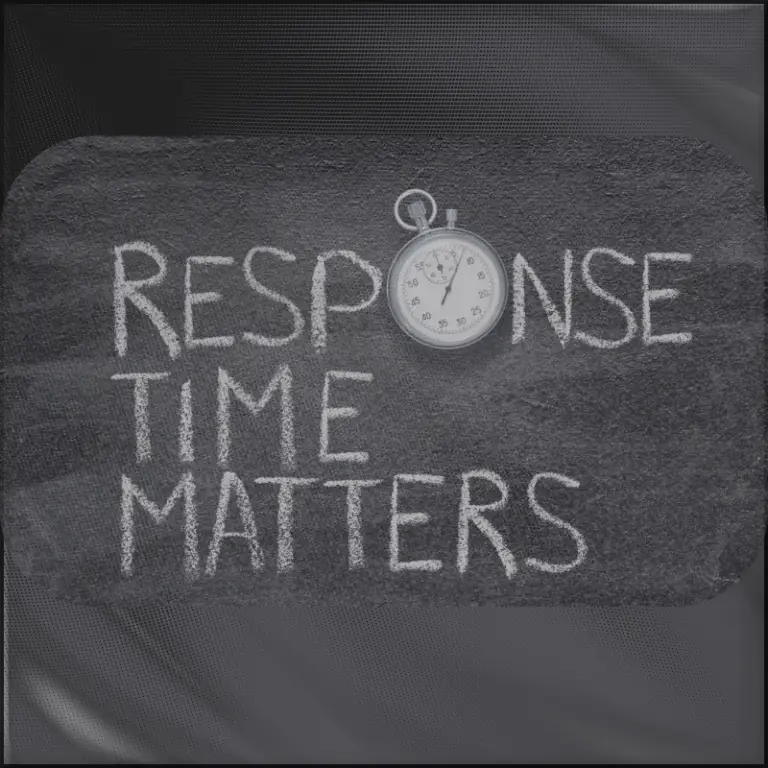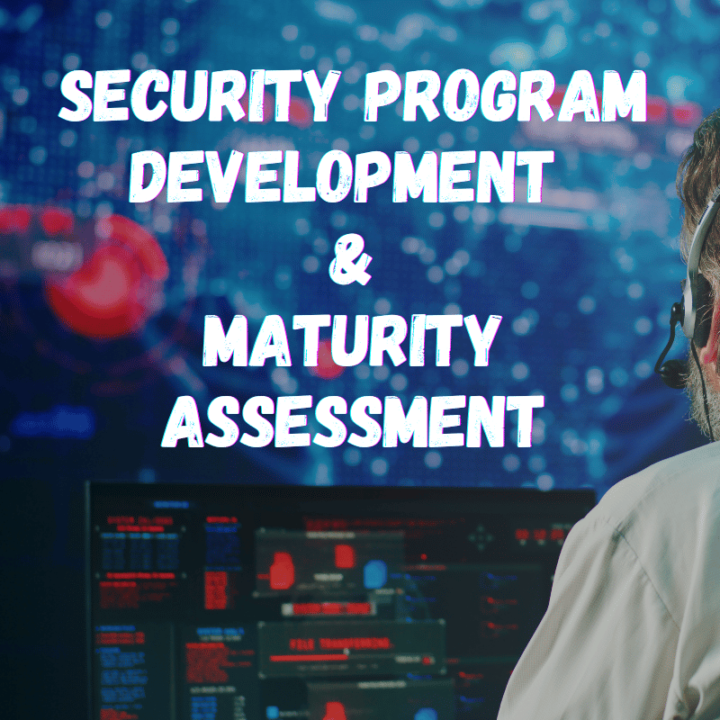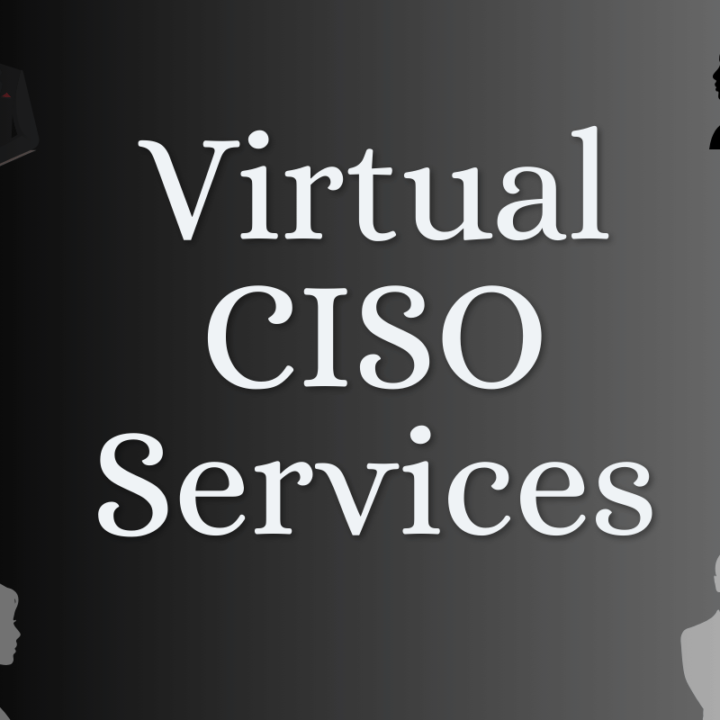Incident Response & Cyberattack Preparedness
- Home
- portfolio
- Consulting Services
- Incident Response & Cyberattack Preparedness

How it Works
This Incident Response (IR) & Cyberattack Preparedness service aims to help organizations of varying sizes—but especially small to medium-sized businesses—bolster their ability to detect, contain, and recover from a broad range of cyber threats. By aligning with established cybersecurity standards, the service provides both proactive planning (through readiness assessments and response plan development) and reactive support (through specialized drills, runbooks, and post-incident review). Clients can choose a one-time assessment or engage in an ongoing model that includes continuous readiness improvements and periodic re-validation.
Framework & Guidance We align our deliverables and processes with recognized best practices from:
ISO 27001:2022 (Information Security Management)
NIST SP 800-53 Rev. 5 (Security and Privacy Controls)
CIS Controls v8 (18 critical controls)
HIPAA (Healthcare security rules)
SOC 2 v2022 (Trust Services Criteria)
PCI-DSS 4.0.1 (Payment Card Industry Data Security Standard)
Cloud-specific frameworks (e.g., CSA CCM, FedRAMP) as relevant
By referencing these frameworks, we ensure the service directly supports regulatory compliance, robust security posture, and alignment with universal industry standards. We tailor each approach to the client’s environment, ensuring that the methodology is both practical and relevant.
Core Deliverables
Readiness & Risk Assessment: Comprehensive evaluation of existing IR posture and high-level threat modeling.
Custom Incident Response Plan: Complete, documented plan covering detection, containment, eradication, and recovery actions.
Threat Runbooks & Playbooks: Step-by-step guides for responding to specific cyberattack scenarios (e.g., ransomware, insider threat).
Tabletop Exercises & Drills: Facilitated sessions or simulations to validate readiness.
Tooling & Process Integration: Review of existing security tool stack (SIEM, SOAR, EDR) and recommendations.
Communication Protocols & Reporting: Templates and best practices for stakeholder updates, compliance notifications, and crisis communications.
Post-Incident Review (PIR): Formal evaluation of how an incident was handled, extracting lessons learned for improvement.
Process & Results
Phase 1: Initial Discovery & Scoping
Activities
- Define project scope, key focus areas, and business priorities.
- Identify regulatory mandates (ISO 27001, HIPAA, PCI, etc.) and specific stakeholder needs.
- Clarify timeline, resource requirements, and success criteria.
Value Delivered
- Clear definition of project scope and alignment with stakeholder expectations.
- Early consensus on compliance drivers and IR objectives, ensuring focused efforts.
- Transparent view of timeline and resource commitments, reducing project ambiguity.
Phase 2: Readiness Assessment
Activities
- Perform a gap analysis of current incident response posture (policies, procedures, toolsets).
- Integrate threat modeling techniques to identify and prioritize likely cyberattack vectors.
- Outline prioritized recommendations for immediate security improvements.
- Establish clear metrics to gauge IR maturity over time.
Value Delivered
- Detailed overview of existing IR strengths and weaknesses.
- Clear understanding of key threat scenarios through structured or scenario-based modeling.
- Actionable recommendations enabling “quick wins” to elevate readiness fast.
- Defined benchmarks to measure future progress in IR maturity.
Phase 3: Plan & Runbook Creation
Activities
- Develop a comprehensive incident response plan tailored to the client’s environment (NIST, ISO, etc.).
- Define roles, responsibilities, and escalation paths to minimize confusion during real incidents.
- Create scenario-specific runbooks for critical threat types (e.g., ransomware, insider threat).
- Establish communication protocols and reporting templates for stakeholder updates and compliance notifications.
Value Delivered
- A custom IR plan referencing industry standards, ensuring thorough coverage.
- Role clarity and structured processes, mitigating panic or overlap in real crises.
- Consistent, repeatable steps against known threats, reducing guesswork under pressure.
- Clear guidance on incident communications, preventing delays or missteps during critical moments.
Phase 4: Technical Drills & Tabletop Exercises
Activities
- Facilitate tabletop exercises and live drills simulating realistic cyberattack scenarios.
- Assess staff performance, collaboration, and adherence to the incident response plan.
- Document improvement areas, from overlooked dependencies to communication bottlenecks.
Value Delivered
- Practical validation of the IR plan under near-real conditions.
- Increased staff confidence and coordination, fostering a proactive security culture.
- Identification of hidden weaknesses, allowing swift remediation before actual incidents.
Phase 5: Remediation & Integration
Activities
- Review existing security tooling (SIEM, SOAR, EDR) for alignment with IR needs.
- Recommend refinements to enhance detection, reduce false positives, and improve response times.
- Integrate updated processes, runbooks, or scripts into the client’s operational workflows (as feasible).
Value Delivered
- Improved alert fidelity and faster incident response through enhanced tooling and process tuning.
- Reduced MTTD (Mean Time to Detect), minimizing attack dwell time.
- Stronger security architecture, aligning with frameworks like CIS Controls or PCI-DSS for robust defense.
Phase 6: Post-Incident Review & Continuous Improvement
Activities
- Document lessons learned from real-world incidents or simulated drills.
- Fine-tune runbooks, update policies, and refine training materials based on findings.
- Offer optional ongoing engagement for clients wanting recurring IR check-ups, plan updates, and re-validation exercises.
Value Delivered
- Actionable feedback loop that drives continuous upgrades to IR readiness.
- Fine-tuned procedures ensuring that each incident (or drill) yields concrete improvements.
- Sustained maturity growth, keeping the IR framework relevant in the face of evolving threats.
Tech Jacks Solutions’ Incident Response & Cybersecurity services are designed to deliver expert-level guidance, timely support, and comprehensive regulatory compliance at competitive rates, tailored specifically to the SMB market.
Business Value Delivered
-
Proactive Security Stance: By integrating recognized standards (ISO 27001, NIST SP 800-53, HIPAA, etc.), organizations move from ad-hoc or reactive incident handling to a mature, structured response approach.
-
Regulatory & Audit Readiness: Clear alignment with major frameworks and sector-specific mandates improves audit outcomes and builds regulator trust.
-
Reduced Operational Downtime: Consistent processes and well-defined roles minimize confusion during incidents, leading to faster containment and less disruption.
-
Enhanced Stakeholder Confidence: Executives, customers, and partners gain confidence that the organization can handle cyber threats responsibly, preserving brand reputation.
-
Long-Term Cost Savings: Preventing or quickly containing breaches averts larger financial losses, legal fees, or reputational damages over time.
-
Culture of Continuous Improvement: Regular drills, post-incident reviews, and strategic updates foster a security-minded culture, enabling agile adaptation to emerging threats.
Pricing Structure | Tiers & Rates
| Tier | Deliverables Included | Cost Range (Approx.) |
| Lite | Readiness Assessment, Basic IR Plan, Basic Tabletop | Contact us for customized pricing |
| Standard | Lite + Threat Runbooks, Tooling Review, Expanded Exercises | Contact us for customized pricing |
| Premium | Full suite (IR Plan, Playbooks, Drills, Post-Incident Review, Ongoing Oversight & Support) | Contact us for customized pricing |
Hourly/Retainer Options
-
Hourly rates typically range from $250 to $350 per hour, depending on complexity.
-
Monthly retainer models can be arranged for ongoing coverage, continuous improvement, and advisory support.
Additional Notes or Future Developments
-
Cloud & DevOps Integration: Ongoing updates will deepen coverage for containerized environments, serverless architectures, and DevSecOps pipelines.
-
Enhanced Threat Intelligence: Future expansions may integrate direct threat intel feeds, giving real-time context on emerging actor TTPs.
-
ML/AI-Driven Detection: We plan to include advanced analytics and machine learning recommendations to expedite detection of abnormal patterns.
-
Expanding Global Compliance: Support for additional regional mandates (e.g., GDPR for EU, PIPEDA for Canada) is continuously updated.
With these future developments, our IR & Cyberattack Preparedness service remains poised to evolve alongside the rapidly shifting threat landscape and emerging industry requirements.
Control Mapping
| Deliverable | ISO 27001 | NIST SP 800-53 | CIS Controls | HIPAA | SOC 2 | PCI-DSS | CSA CCM / FedRAMP |
|---|---|---|---|---|---|---|---|
| 1. Readiness & Risk Assessment | Annex A – A.16 (Information Security Incident Management), plus risk assessment provisions | IR family (IR-1 through IR-8), RA family for gap analysis | Control 17 & 18 (Incident Response, Pen Testing), plus control 2 for inventory | Security Rule 164.308(a)(6)(i): Incident procedures, plus risk analysis | Security & Availability TSC – documented incident processes, risk analysis | Req. 12.10 – IR plan readiness | Aligns with CCM Incident Management (AIS-06) and supports FedRAMP readiness (Incident Response) |
| 2. Cyberattack Scenario Modeling & Impact Analysis | Annex A – risk treatment objectives | IR-2 (Incident Reporting), CA family for assessments | Control 18.2 (IR Testing), also references control 2.5 & 13.7 for threat analysis | HIPAA Security Rule 164.308(a)(1): risk analysis for potential incidents | Security TSC – scenario-based threat assessments | Req. 12.10.2 – scenario-based IR drills | Maps to CCM Risk Management (RMP), FedRAMP ongoing risk analysis |
| 3. Custom Incident Response Plan (IRP) | A.16.1 – Management of information security incidents | IR-1 (Policy & Procedures), IR-4 (Incident Handling) | Control 18 – IR Management steps, referencing recommended procedures | 164.308(a)(6)(ii) – IR response & reporting | Security & Availability TSC – formal documented IR plan | Req. 12.10 – IR plan creation & testing | CCM Incident Management (AIS-06) and FedRAMP IR processes (IR-3, IR-4) |
| 4. Threat Runbooks & Playbooks | Supports A.16.1 – ensuring consistent IR action | IR-4, IR-5 – guidance for IR runbooks, NIST SP 800-61 for specialized handling steps | Control 18.5 – runbooks, consistent processes | 164.308(a)(6) – procedural steps for threat response | Security TSC – standardized procedures for IR events | Req. 12.10.3 – define responsibilities & steps in runbooks | CCM AIS-06 – ensures consistent approach to runbook usage; FedRAMP IR execution (testing, coordination) |
| 5. Tabletop Exercises & Drills | A.16.1.5 – learning from security incidents & testing | IR-3 (Incident Testing & Drills), IR-8 (Post-incident review) | Control 18.6 – tabletop exercises, verifying readiness | 164.308(a)(8) – periodic technical & nontechnical evaluations | Security & Availability TSC – verifies IR plan is tested | Req. 12.10.4 – staff training & IR plan testing | CCM AIS-06.2 – test IR procedures; FedRAMP ongoing IR testing compliance |
| 6. Tooling & Process Integration | A.12 & A.14 – operations security & system acquisition | CM & SA families – ensures secure configuration & system maintenance, plus IR synergy | Control 8, 9, 12 (tool integration, logging, secure configs) | 164.308(a)(1)(ii)(A) – ensure up-to-date tool usage & documentation | Security & Availability TSC – verifying processes & tools support IR | Req. 11, 12 – synergy with vulnerability scans & IR processes | CCM IAM-03, AIS-06 – alignment for tooling & system integration; FedRAMP supports secure system ops |
| 7. Communication Protocols & Reporting | A.16.1.4 – communication with stakeholders, A.7.2 (awareness) | IR-6 (Incident Reporting to external orgs), AC families for authorized communications | Control 17.7 – define communications plan, plus email security controls | 164.308(a)(6)(ii) – incident documentation & notifications | Security & Confidentiality TSC – communication flows for incident data | Req. 12.10.5 – define external & internal comm channels | CCM AIS-06.4 – external communication guidelines; FedRAMP IR comm/tracking (IR-5) |
| 8. Post-Incident Review (PIR) | A.16.1.6 – improvements from incidents, continuous improvement | IR-8 – post-incident analysis & reporting, NIST cyclical IR model | Control 18.7 – lessons learned integrated back into program | 164.308(a)(7)(ii)(D) – evaluate & revise procedures post-incident | Security & Availability TSC – ensures iterative improvement | Req. 12.10.7 – continuous refinement & improvement | CCM AIS-06.5 – measure incident outcomes; FedRAMP IR closeout & feedback loop |

Incident Response & CyberAttack Preparedness
Interested in learning more about this solution? Please visit our Solution page.



